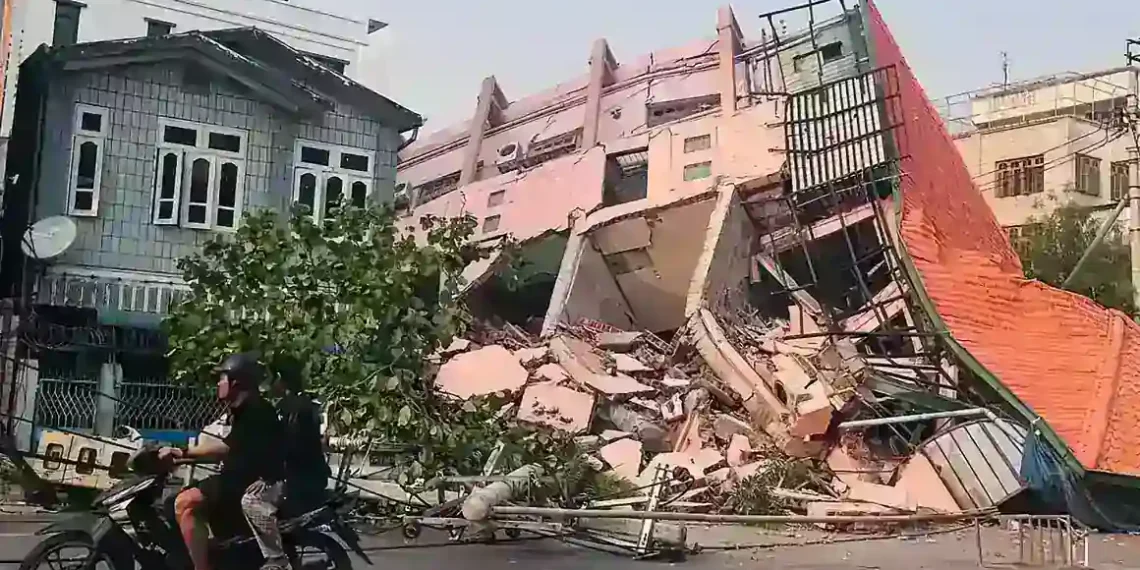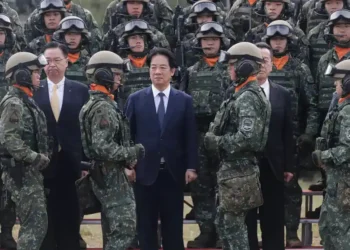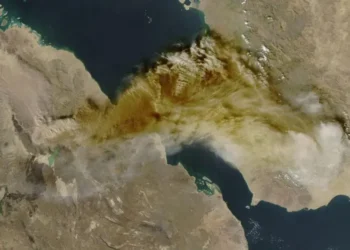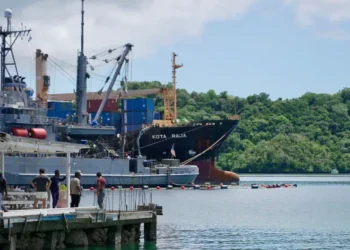Voices Emerge from Quake-Damaged Myanmar: A Nation in Crisis
A devastating earthquake struck Myanmar on Friday, intensifying the suffering in a country already reeling from years of civil war. The 7.7 magnitude quake hit the heart of a conflict-torn nation, further isolating Myanmar, which had already been struggling with disrupted communications and transportation. As rescue operations struggle to gain ground, voices from the rubble are starting to emerge, revealing a story of desperation, loss, and a glimmer of hope amidst devastation.
Myanmar has been embroiled in a brutal civil war since the military junta seized power in a 2021 coup. Pro-democracy fighters and ethnic rebel groups have fought back against the regime, leaving the country divided and vulnerable. Now, just as things seemed at their worst, the natural disaster has piled on fresh misery.
The earthquake struck in the middle of this ongoing conflict, further complicating efforts to provide relief. The military government has reported over 1,600 deaths, but experts warn that the true toll could be much higher. Given the ongoing communications breakdown and the scale of destruction, it may take weeks for the full impact to be known.
As reports began trickling in from the epicenter of the quake, the city of Mandalay – Myanmar’s former royal capital and home to over 1.5 million people – emerged as the hardest-hit area. Known for its Buddhist monasteries and historical sites, Mandalay saw its infrastructure collapse under the intense force of the earthquake, which released energy equivalent to “334 atomic bombs,” according to one geologist.
Residents recalled the chaos as buildings crumbled and roads were ruptured. “It hit very strong and very fast,” said a woman from Mandalay, describing the terrifying moment her grandmother was trapped under debris. “The door couldn’t open as a fence had collapsed onto it. I shouted for help, and my husband managed to open it just in time.”
As the earth shook, residents frantically tried to rescue loved ones, often with nothing but their hands. A former lawyer in Mandalay told CNN that three members of his wife’s family had been killed. “We haven’t been able to recover their bodies,” he said, overwhelmed by grief and helplessness.
Mandalay’s mosques, busy with Friday prayers, were also hit. “When the buildings collapsed, many Muslims were trapped inside,” one man recalled. “There are more than a hundred injured.”
Across the Irrawaddy River in Sagaing region, a more rural area of Myanmar, the destruction continued. Many homes there are made from wood and thatch, which are more likely to survive earthquakes. Yet, in some areas, buildings were still destroyed, leaving survivors in urgent need of medical care.
Nang Aye Yin, a resident of Sagaing, spoke of the collapse of a nunnery where his relative was studying. “Luckily, no one died, but two were badly wounded,” he said. “One niece lost three toes, and another nun suffered severe head injuries.”
Hospitals in both Sagaing and Mandalay were overwhelmed with casualties and turned many away. “They’re already at full capacity,” Nang said. “We were forced to wait for care.”
Meanwhile, survivors and rescue teams have voiced frustration over the lack of heavy machinery and military support for recovery efforts. “There’s too much rubble, and no rescue teams have come for us,” one Mandalay survivor told Reuters.
In an unprecedented move, Myanmar’s military junta has appealed for foreign aid. Historically, the junta has resisted international assistance, opting instead to minimize the impact of disasters. This time, however, the scale of the destruction has forced their hand.
Junta leader Min Aung Hlaing visited Mandalay on Saturday to assess the damage. Shortly after, neighboring countries, including China, Singapore, Malaysia, India, and Russia, announced plans to send rescue teams and supplies.
In an unusual turn, Myanmar’s shadow National Unity Government (NUG), a group formed by deposed lawmakers, declared a two-week pause in military operations. This “temporary ceasefire” aims to allow humanitarian relief efforts to take precedence. The NUG called on all ethnic groups and citizens to cooperate in rescue operations, providing much-needed relief to the victims.
The earthquake that struck Myanmar is the most powerful in a century. Experts explained that the rupture, which lasted a full minute, released immense energy, causing dramatic sideways movements on the ground. “Think of a piece of paper tearing,” said James Jackson from the University of Cambridge, describing the force that sent shockwaves across the country.
Despite its magnitude, the quake was not entirely unexpected. It occurred along the Sagaing Fault, a major geological fault line that has historically been the site of large earthquakes.
As the dust settles, Myanmar faces an uncertain future. The government, already stretched thin by internal conflict, is struggling to provide adequate relief to the tens of thousands affected by the quake. Meanwhile, the resistance forces and civilian groups are stepping in to fill the gaps, offering what help they can in the absence of military support.
For the people of Mandalay and beyond, the road to recovery will be long and filled with challenges. But amidst the destruction, the resilience of the Myanmar people shines through, as they continue to search for survivors and rebuild their shattered communities.
This article was rewritten by JournosNews.com based on verified reporting from trusted sources. The content has been independently reviewed, fact-checked, and edited for accuracy, neutrality, tone, and global readability in accordance with Google News and AdSense standards.
All opinions, quotes, or statements from contributors, experts, or sourced organizations do not necessarily reflect the views of JournosNews.com. JournosNews.com maintains full editorial independence from any external funders, sponsors, or organizations.
Stay informed with JournosNews.com — your trusted source for verified global reporting and in-depth analysis. Follow us on Google News, BlueSky, and X for real-time updates.














